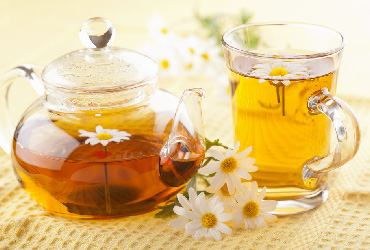By Carlos Amaya-Cubides
“May I have a chamomile tea?” I overheard Ms. Maria, a Latino woman, request from her waiter one day recently. I was at the next table, having lunch with an associate of Asian descent. He apparently overheard her request too because he bent over next to my ear, and said: “I do not understand. Chamomile is an herb. There’s no tea in chamomile. Why did that woman ask for chamomile tea?”
Latinos often use the Spanish words for “tea” and “infusion” interchangeably. Although teas and infusions are similar, they are not the same.
Infusions are drinks that are prepared with boiled water using different fruits or plants and can made with leaves, flowers, roots, seeds, and even bark. Teas, also prepared with boiled water, are a kind of infusion, but are always derived from a plant known as camellia sinensis, the tea plant. So, while all teas are infusions; not all infusions are teas. Literally speaking, my associate from that lunch the other day was right. Ms. Maria should have asked for a chamomile infusion, and not chamomile tea.
While many non-tea infusions are recognized for their health properties, experts generally recommend tea, which has been considered a medicinal beverage since ancient times. Several studies show evidence that regular tea consumption helps combat aging, prevents the development of certain types of cancer, reduces the risk of heart disease and stroke, improves brain function, and reduces low-density lipoprotein (LDL) cholesterol, also called “bad cholesterol.”. Evidence also suggests that tea may help with weight management.
The tea plant boasts an impressive number of compounds within its leaves, including compounds that give tea its unique flavors and aromas.
Tea also contains the well-known stimulant, caffeine. A cup of Black Tea, for example, contains about 40 milligrams of caffeine.
Tea is one of the most consumed beverages in the world, second only to water. Approximately 80 percent of Americans are tea drinkers and that percentage is even higher among millennials. On any given day, over 158 million Americans are drinking tea. In 2016, Americans consumed almost 84 billion servings of tea, or more than 3.8 billion gallons. About 80 percent of all tea consumed was Black Tea, while 16 percent was Green Tea, and the small remaining amount was comprised of Oolong and White Teas. As a nation, we highly value diversity in our tea options, and drink our tea, hot or iced, while we choose from the more than 3,000 varieties of tea available worldwide.
At the end of the day, it does not matter why we drink tea, what flavor we choose, or what we call it, our body will be equally grateful if we drink a healthy cup of tea or an aromatic and medicinal infusion of herbs. Both, although different, will help us stay healthy.

